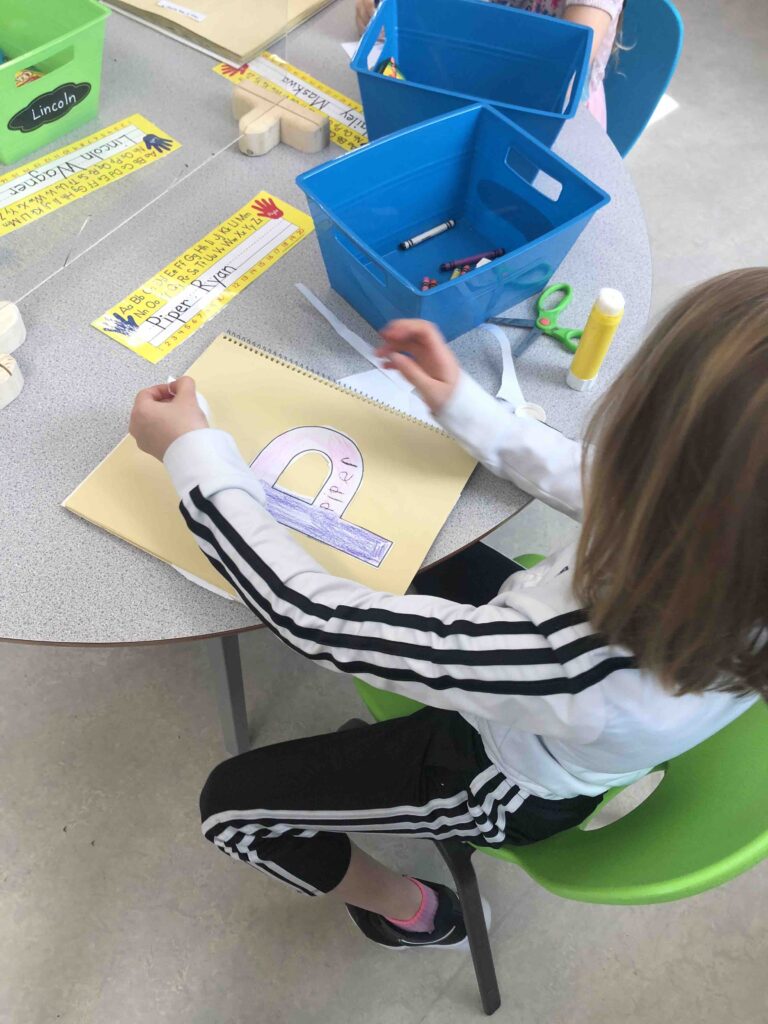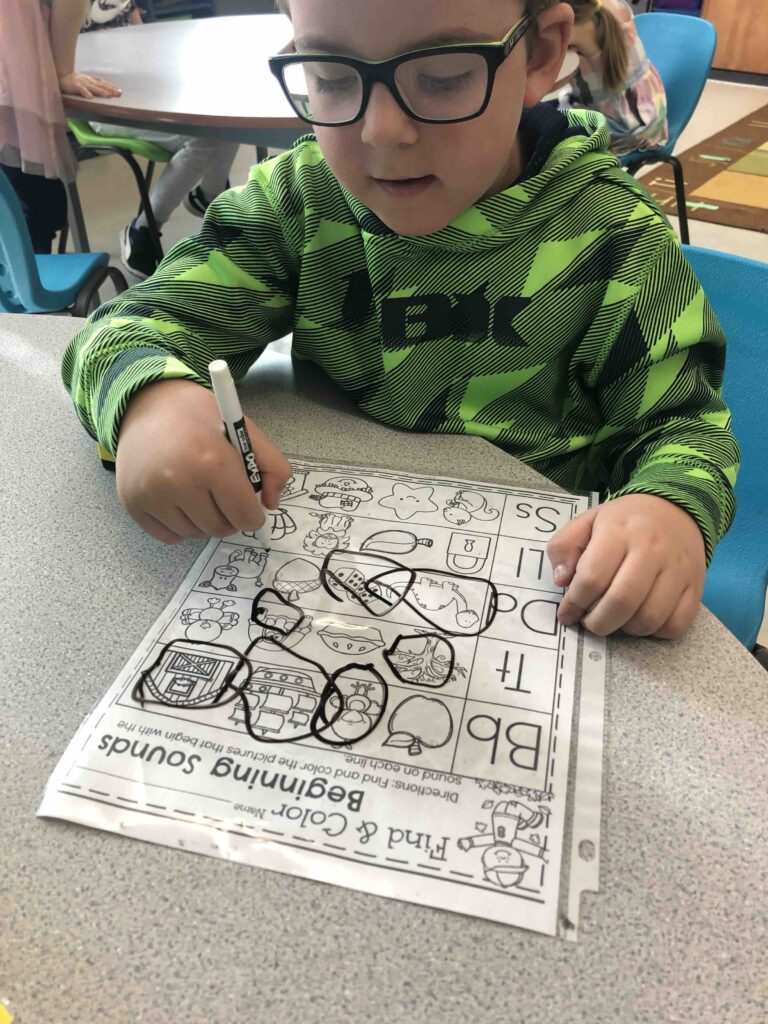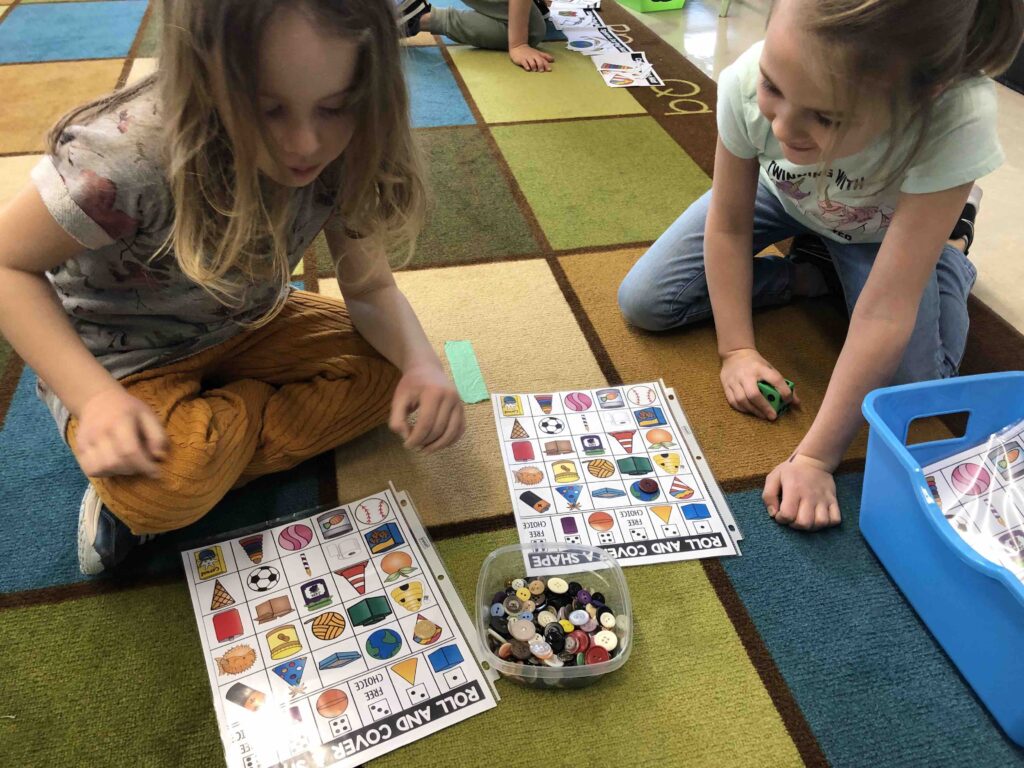English Language Arts Learning Centres
This weekly set (held once of twice a week, depending on the schedule) of Learning Centres has the benefit of many teachers in the room. With the presence of the Learning Assistance Teacher there is a Teacher/TA for each centre. During the practicum these stations had either a change in the activity connected to a learning topic or a change in the learning topic.
Students generally spend ten minutes at each centre for a total of forty minutes. Early on in my practicum students were place in random groupings; in the final weeks this transitioned to levelled groupings. With levelled groupings we were able to differentiate learning centre’s based on the students learning needs.
I had conversations with the other centre leaders where student learning is highlighted; they share both flags to keep an eye on and students who may be ready for an extension. As the lead teacher I changed centres regularly so I could gauge student understanding at each centre.
The following are centres I have incorporated:
- Extension worksheet for the letter of the week
- Supplies: worksheet, pencil, crayons
- Rhyming worksheet in a plastic sleeve
- Supplies: Bin with the worksheet already in the plastic sleeve, dry erase pens, dry erase erasers
- Beginning letter worksheet in a plastic sleeve
- Supplies: Bin with the worksheet already in the plastic sleeve, dry erase pens, dry erase erasers
- Fill in the missing letter ABC chart in a plastic sleeve
- Supplies: Bin with the worksheet already in the plastic sleeve, dry erase pens, dry erase erasers
- CVC words station one
- Supplies: Words written on large wooden hearts, letters for each word printed on small wooden hearts
- CVC words station two
- Supplies: CVC word family cards: picture on one card, word on the other
Math Learning Centres
Both the 2D and 3D math units had accompanying Learning Centres. Often students used these independently after they finished the math lesson learning activity. I also used some of these stations for assessment purposes and once for each group of learning centres they were used as rotation centres. For the most part, these centres allow students further engagement with 2D and 3D shapes.
2D learning centres:
- Roll and Cover
- Supplies: dice, shape card in plastic sleeve, buttons for covering shapes
- Pattern Block Letters
- Supplies: pattern blocks, pattern block letter design
- 2D shape sort
- Supplies: category title card, object cards
- How many corners
- Supplies: cards and clothes pegs
- How many sides
- Supplies: cards an clothes pegs
3D learning centres:
- Roll and Cover
- Supplies: dice, shape card in plastic sleeve, buttons for covering shapes
- Pattern Block Designs
- Supplies: pattern blocks, pattern block design cards, laminated tally sheet, dry erase pens, dry erase erasers
- 3D shape sort
- Supplies: category title card, object cards
- Find the 3D shape to object
- Supplies: cards, clothes pegs
- Make 3D shapes from magnetic blocks
- Supplies: magnetic block bin





